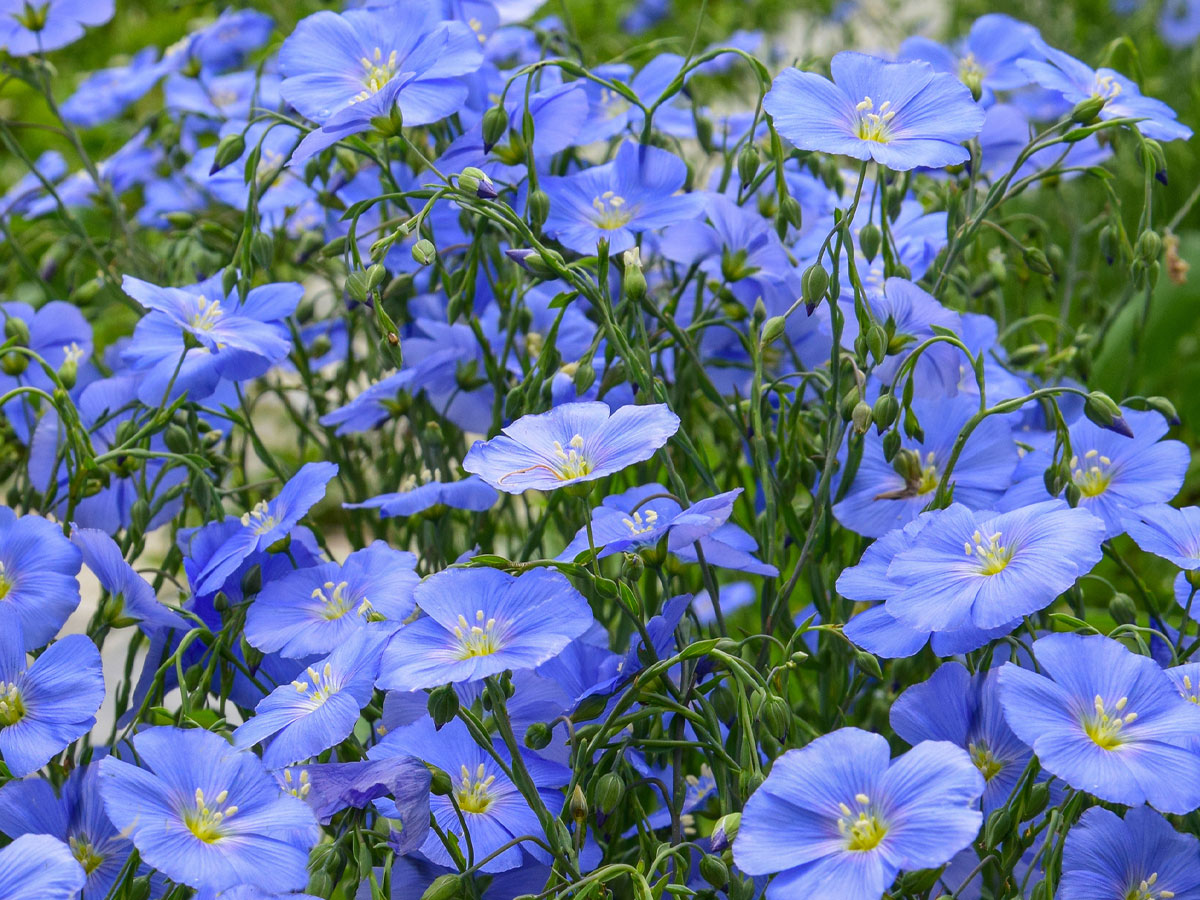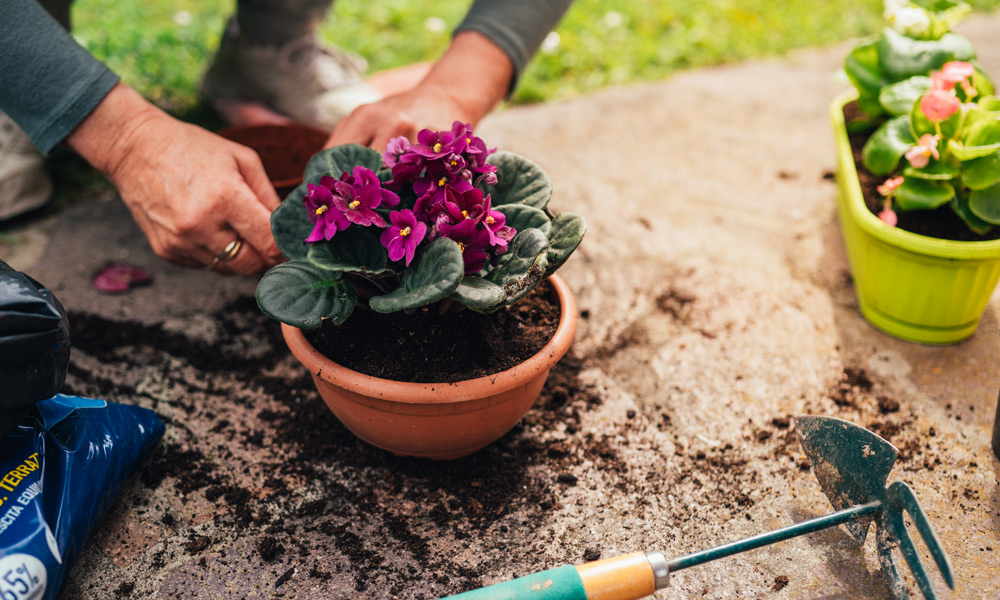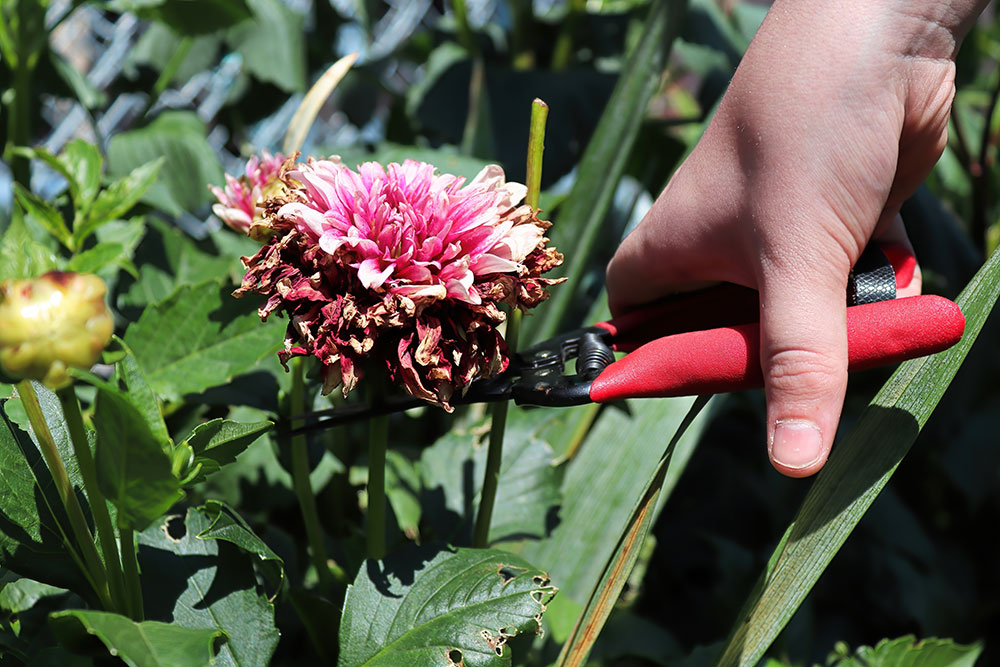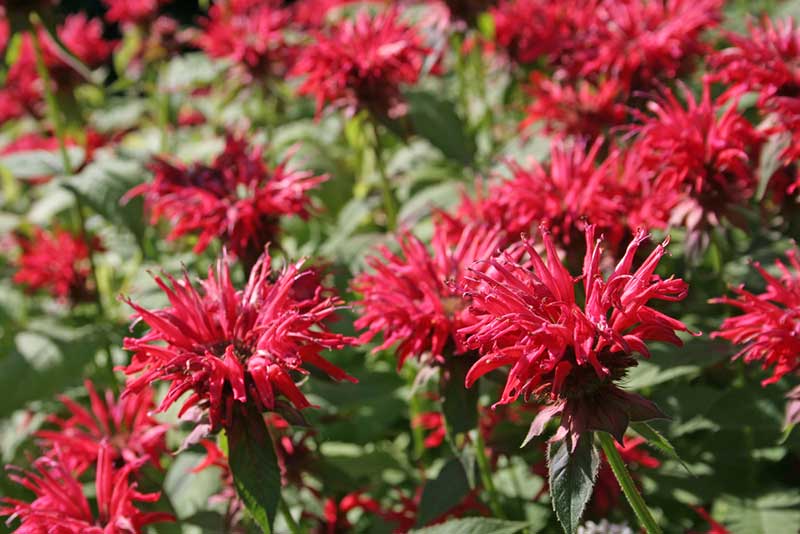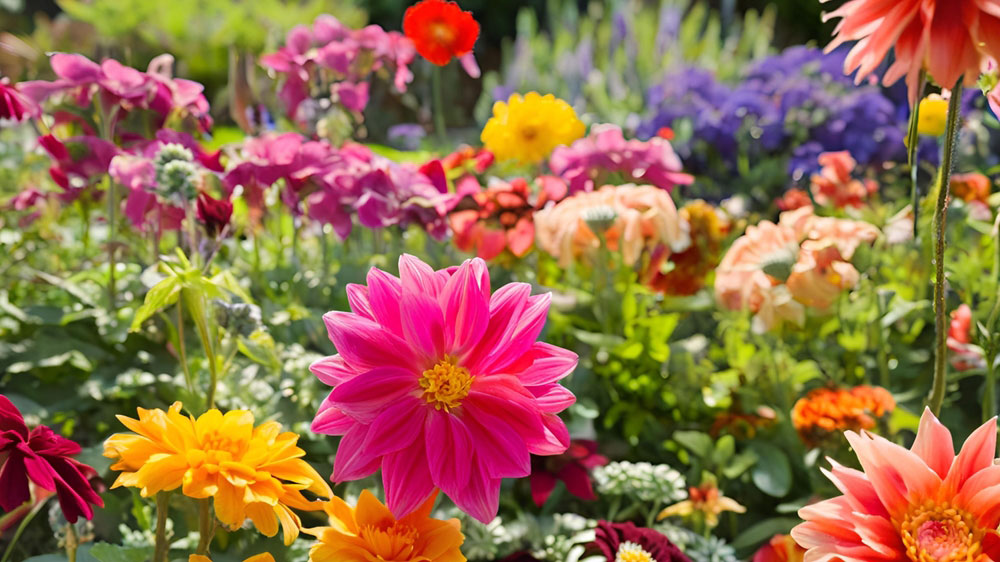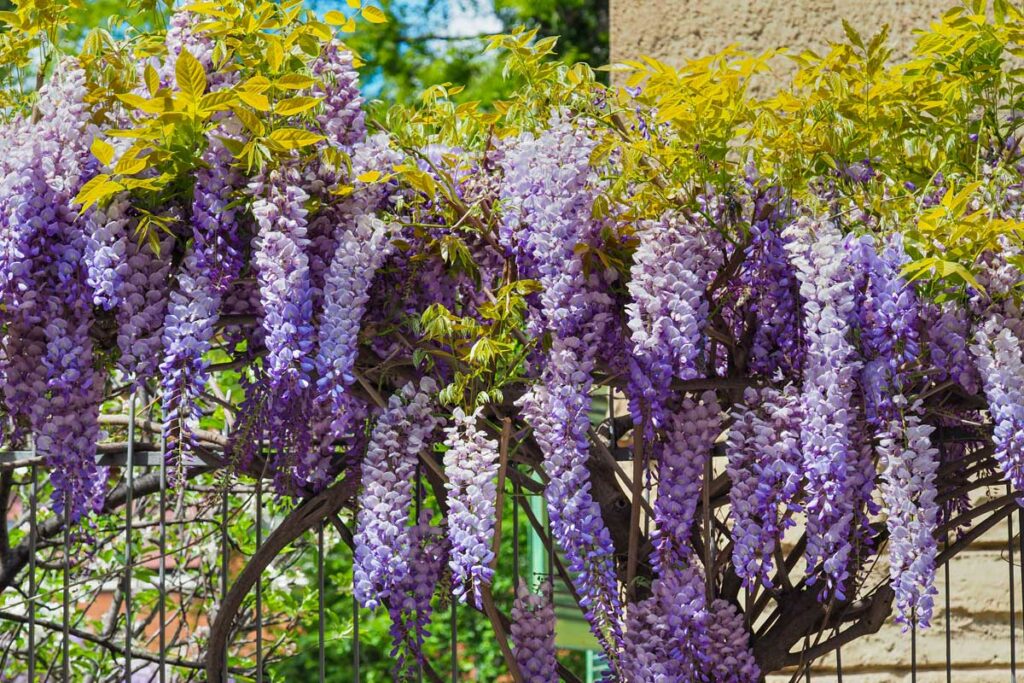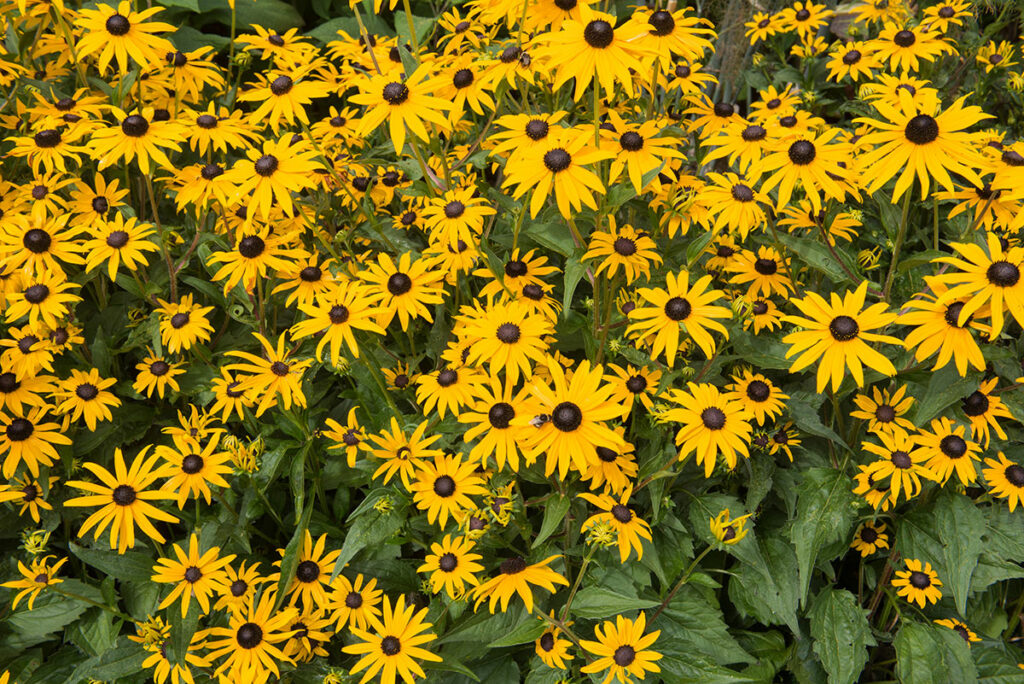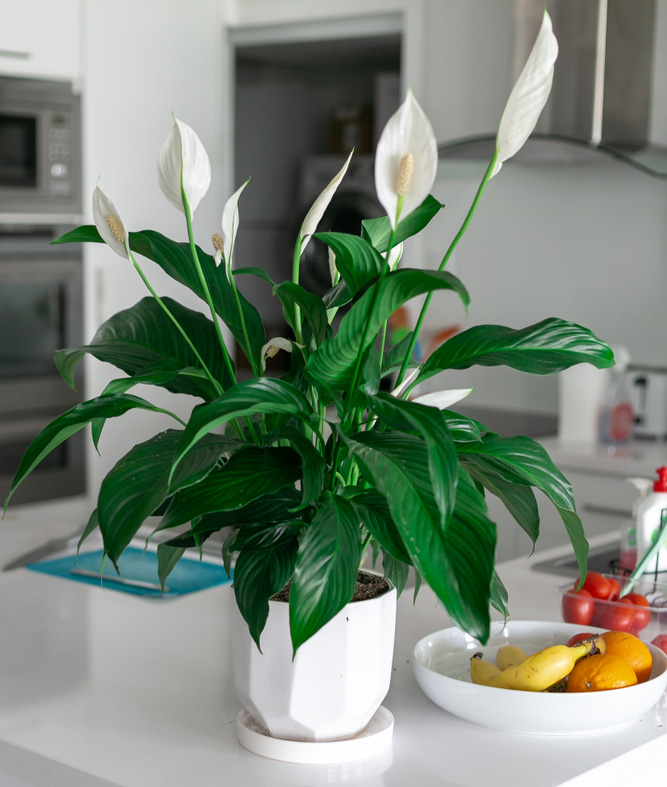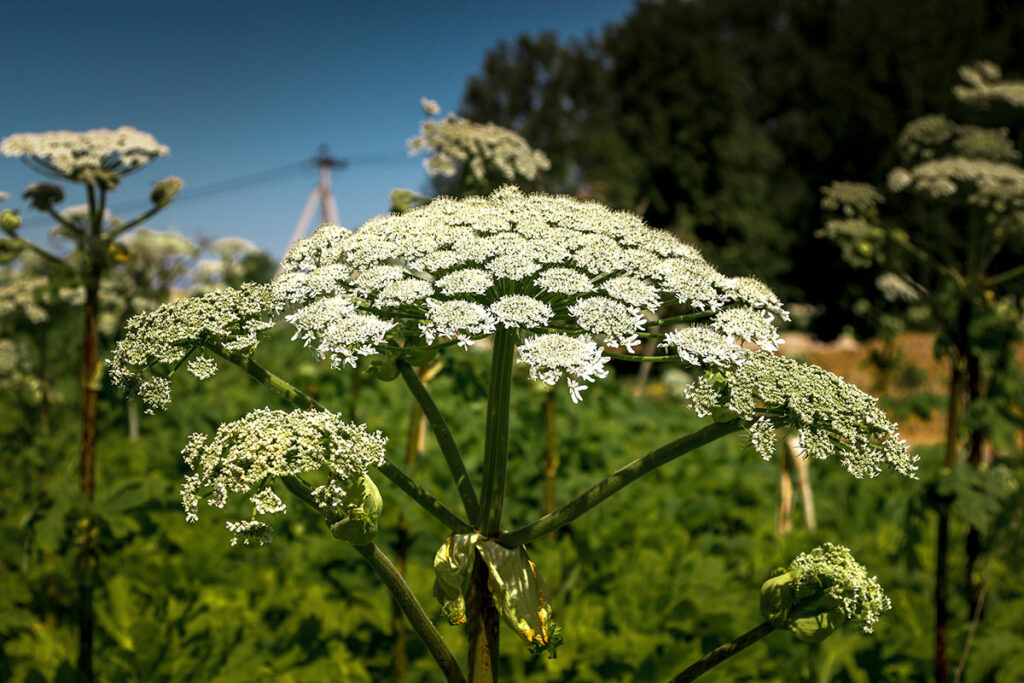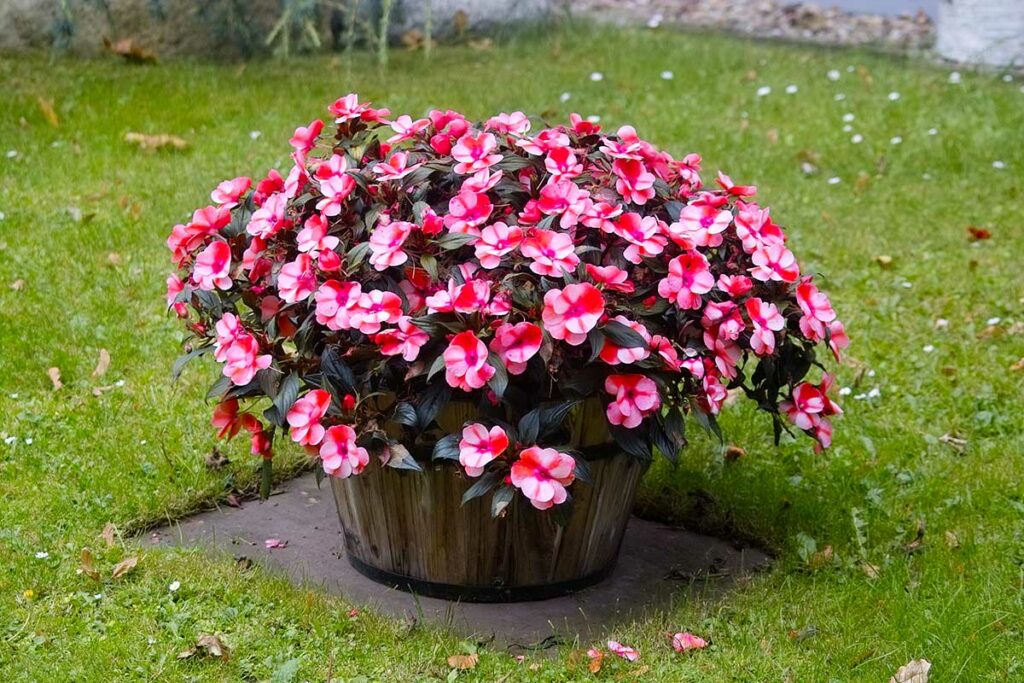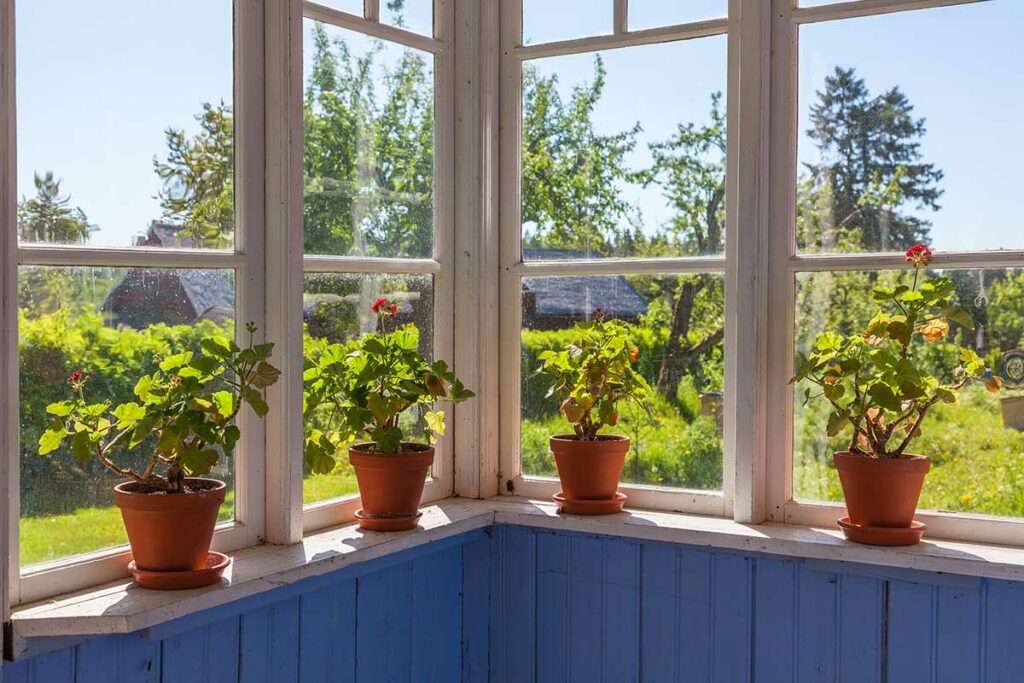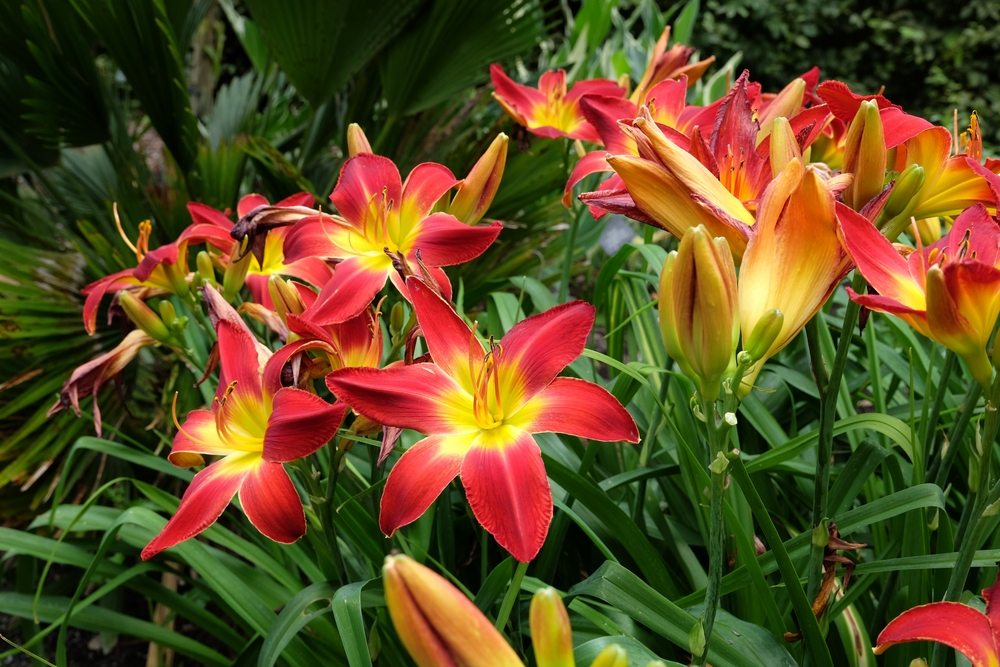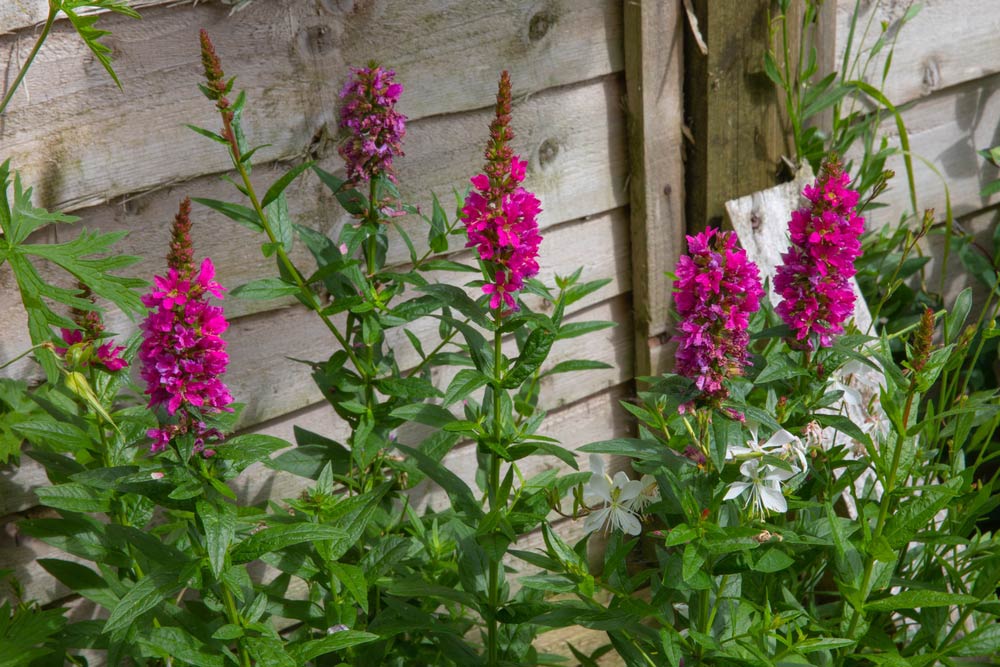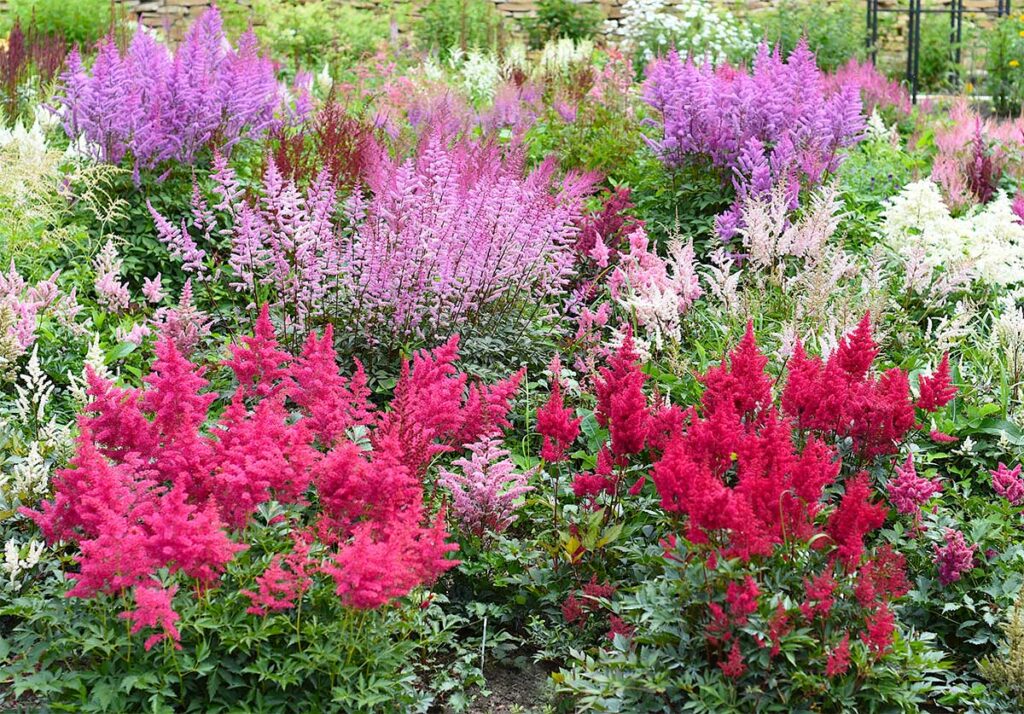
Are you looking to add some long-lasting color and beauty to your garden? Perennial plants with extended bloom times can be a fantastic addition to achieve that goal.
By choosing perennial flowers that have lengthy blooming periods, you can enjoy a continuous, vibrant display in your outdoor space.
In this article, we’ll introduce you to 21 perennial plants with long-lasting flowers, sure to enhance the charm of your garden.
These perennials are not only easy on the eyes but also add a delightful touch to your landscape. With their extended bloom times, they’ll keep your garden looking fresh and inviting throughout the various seasons.
So, if you want to create a garden with flowers that last, these perennial plants are an excellent place to start.
No matter your climate or garden style, there’s a perennial on this list that will suit your needs and add lasting beauty to your green haven.
Popular Long-Lasting Perennial Flowers
Shasta Daisy
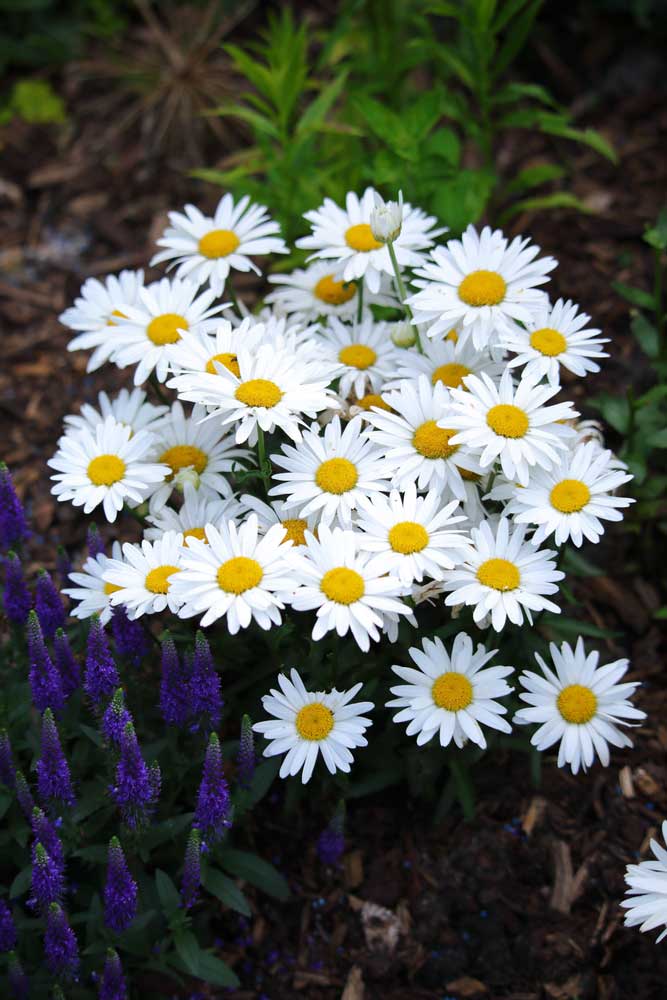
Shasta Daisies bring cheerful, white flowers with yellow centers to your garden. They bloom from early summer to early fall, providing long-lasting color. Plant them in a sunny location with well-draining soil.
Blanket Flower (Gaillardia)
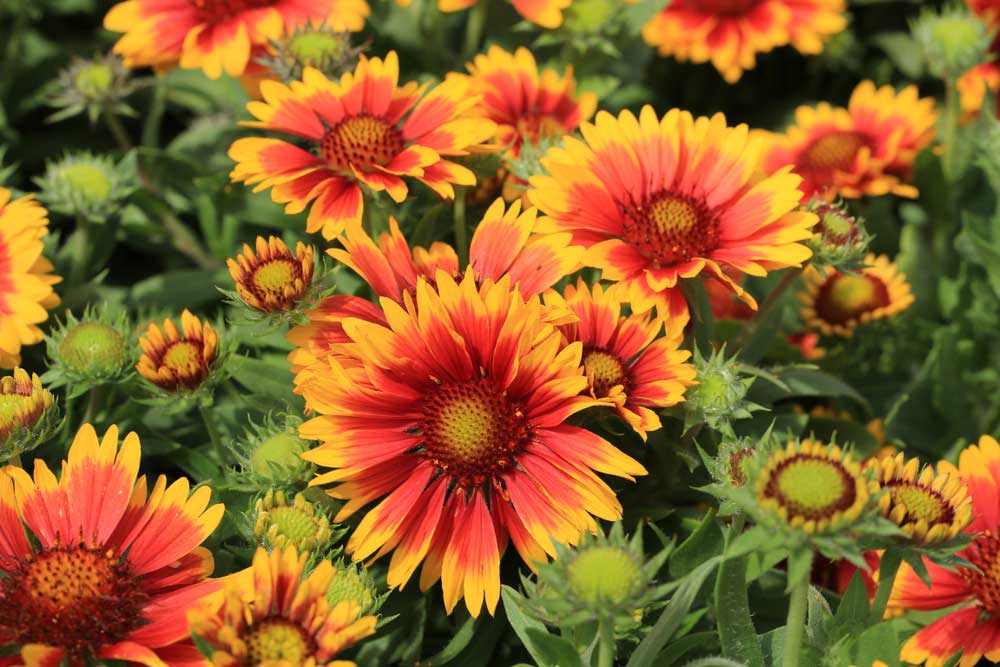
These vibrant, colorful flowers bloom from early summer to fall. They can thrive in various soil types and need full sun to grow. Blanket flowers are drought-tolerant and attract pollinators to your garden.
Catmint (Nepeta)
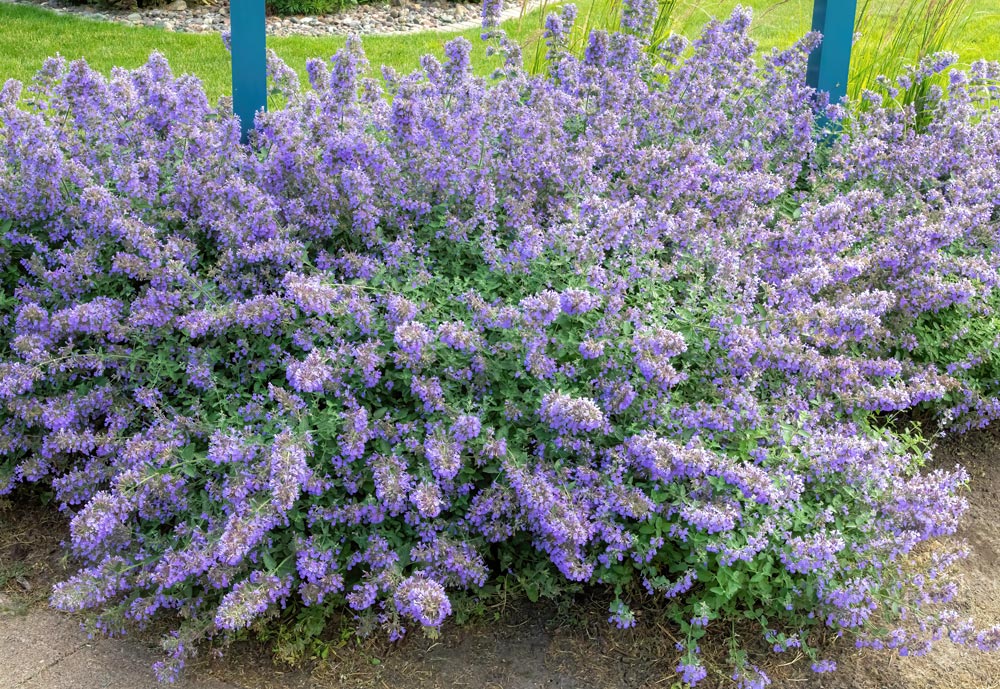
Catmint (Nepeta) is a hardy perennial known for its aromatic foliage and abundant clusters of lavender-blue flowers. It blooms from late spring to summer and often reblooms in the fall, attracting pollinators like bees and butterflies. Catmint thrives in full sun to partial shade and prefers well-draining soil. Once established, it’s drought-tolerant and low-maintenance, making it an ideal choice for both flower beds and borders.
Black-Eyed Susan (Rudbeckia)
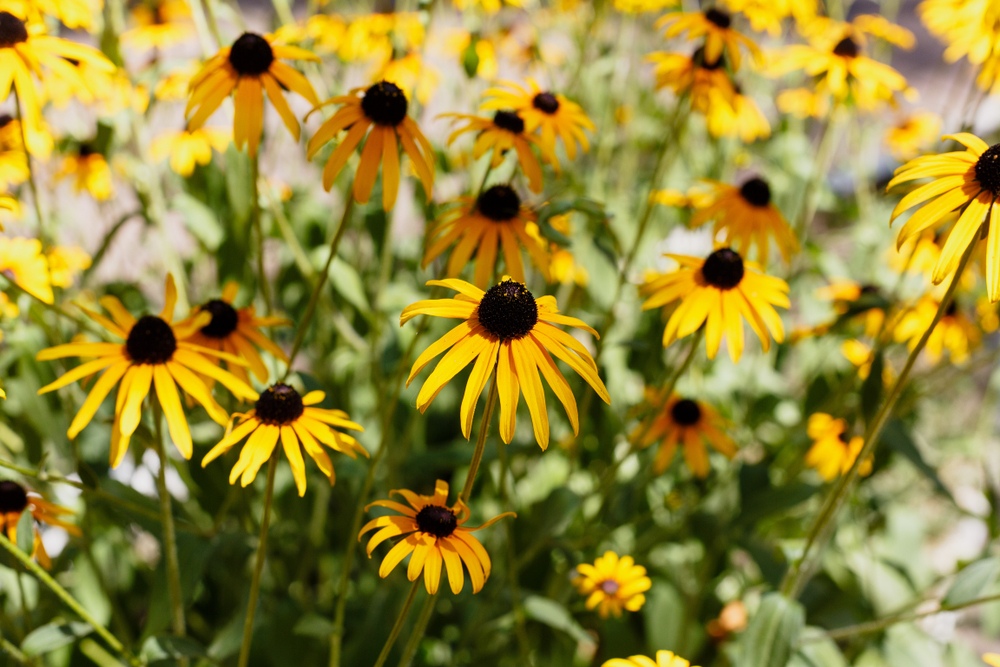
Black-Eyed Susans are a summer-favorite with yellow-orange petals surrounding a dark center. They bloom from mid-summer to early fall and prefer full sun and well-drained soil.
Coreopsis (Coreopsis)
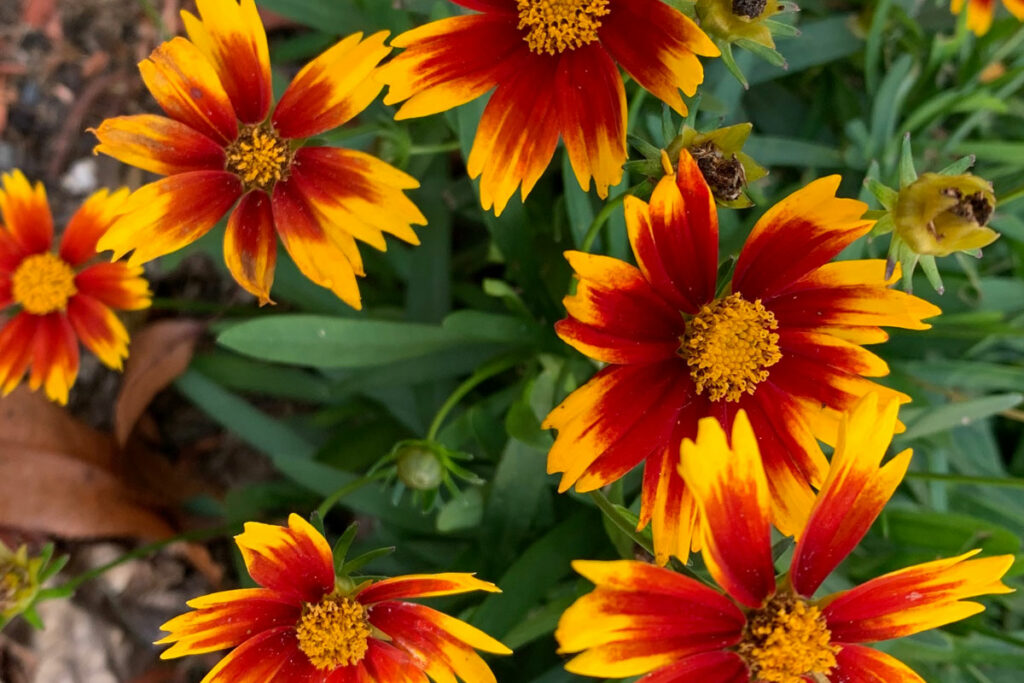
Coreopsis offers bright yellow or pink flowers that bloom from early summer to fall. They enjoy full sun and well-draining soil. With their long-lasting blooms, coreopsis is perfect for borders and containers.
Salvia (Salvia spp.)
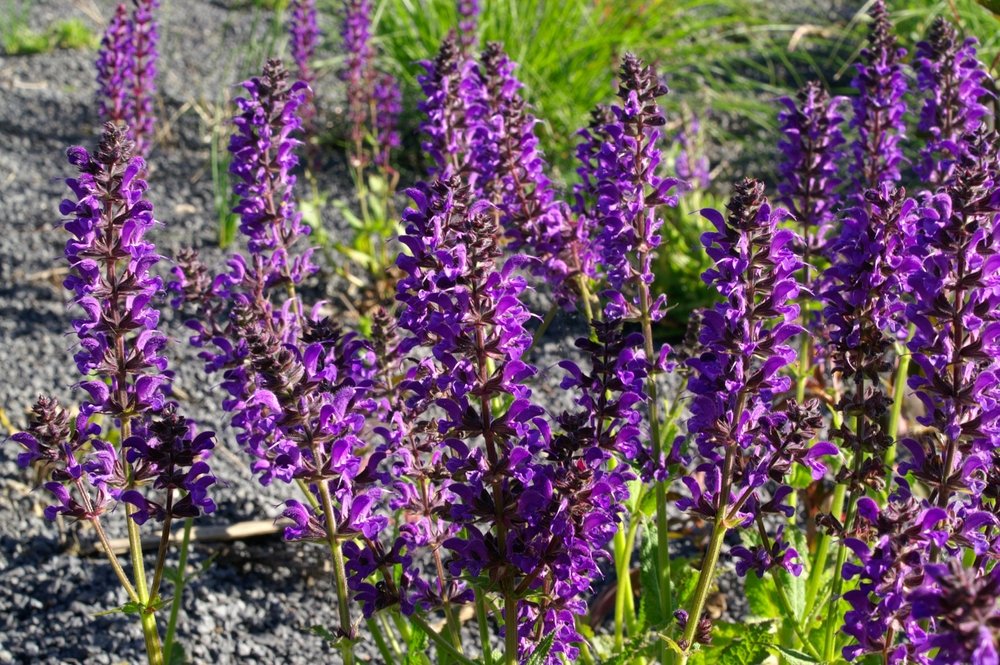
Salvia provides colorful spikes of flowers from early summer to fall. They thrive in full sun and well-draining soil. Plant them in your garden for a friendly invitation to beneficial pollinators.
Russian Sage
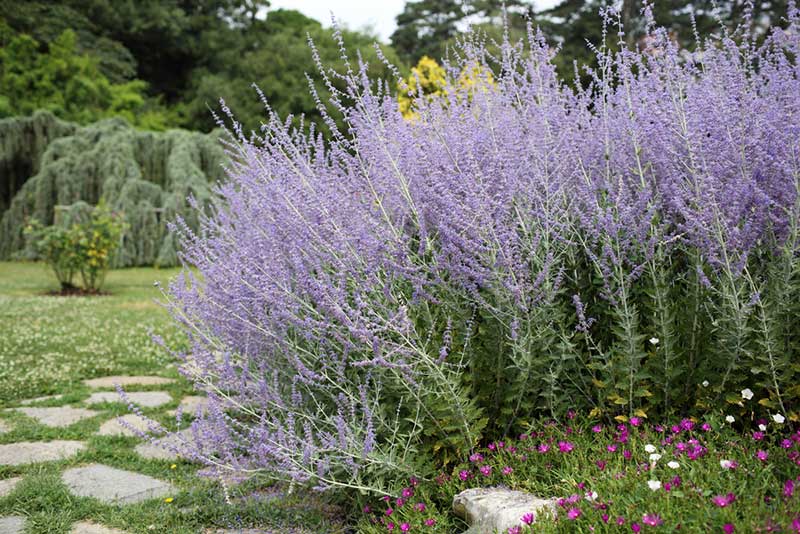
This perennial features lovely blue-purple flowers and grey-green foliage. Russian Sage blooms from midsummer to fall and prefers full sun and well-draining soil.
Sedum (Sedum spp.)
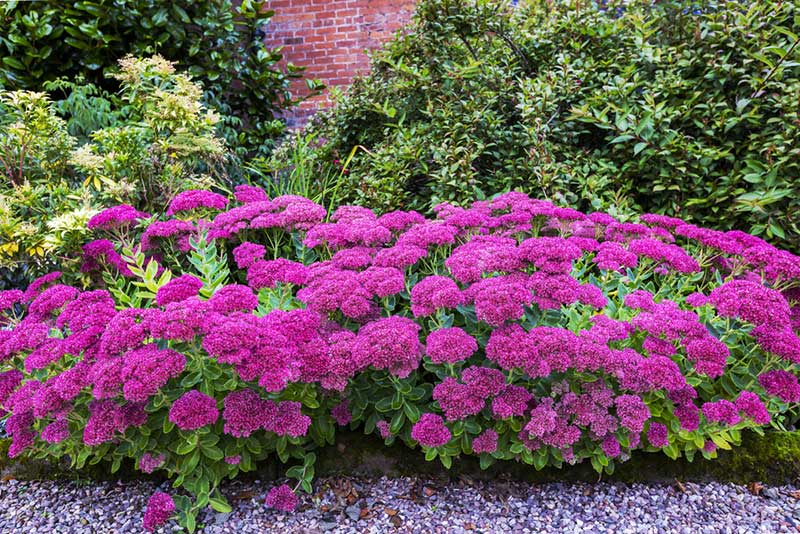
Sedums have succulent leaves and flower clusters that bloom from late summer to fall. They excel in full sun and well-draining soil, and are known for being low-maintenance and drought-tolerant.
Astilbe
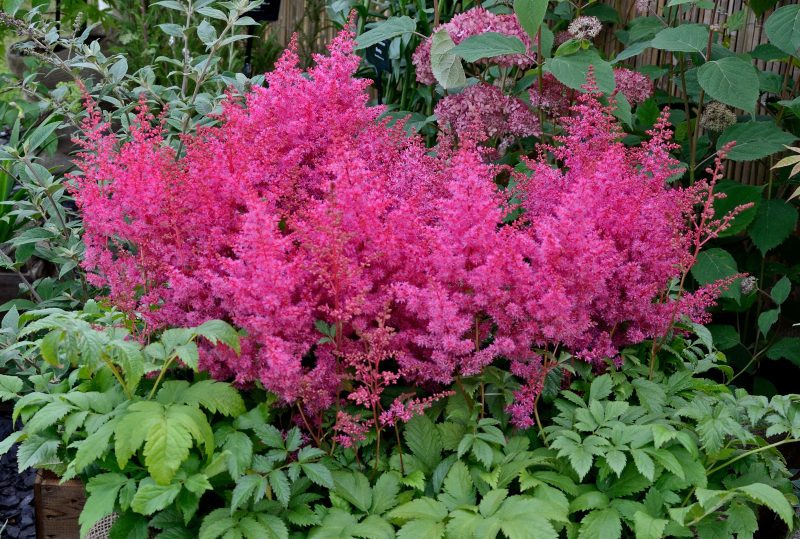
Astilbes produce feathery, showy blooms in shades of pink, red, white, and purple. They flourish from late spring to early summer and appreciate part to full shade and moist, well-draining soil.
Garden Phlox (Phlox paniculata)
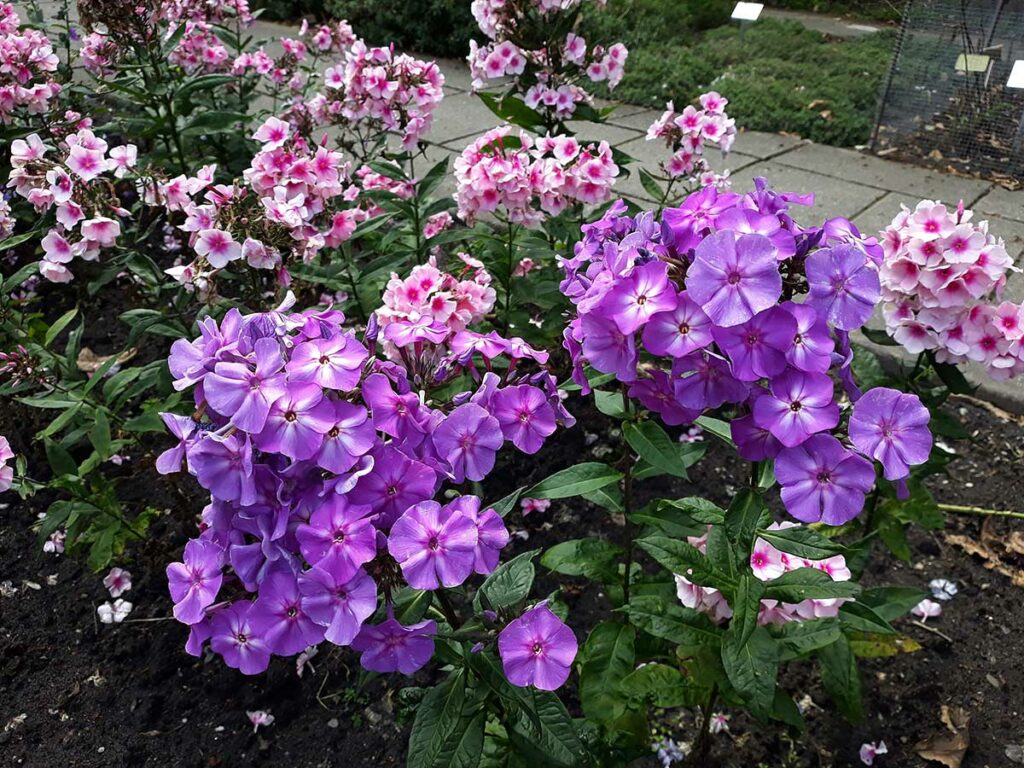
Garden Phlox provides fragrant, showy flowers from mid-summer to early fall. They thrive in full sun and well-draining soil but require good air circulation to prevent powdery mildew.
Yarrow
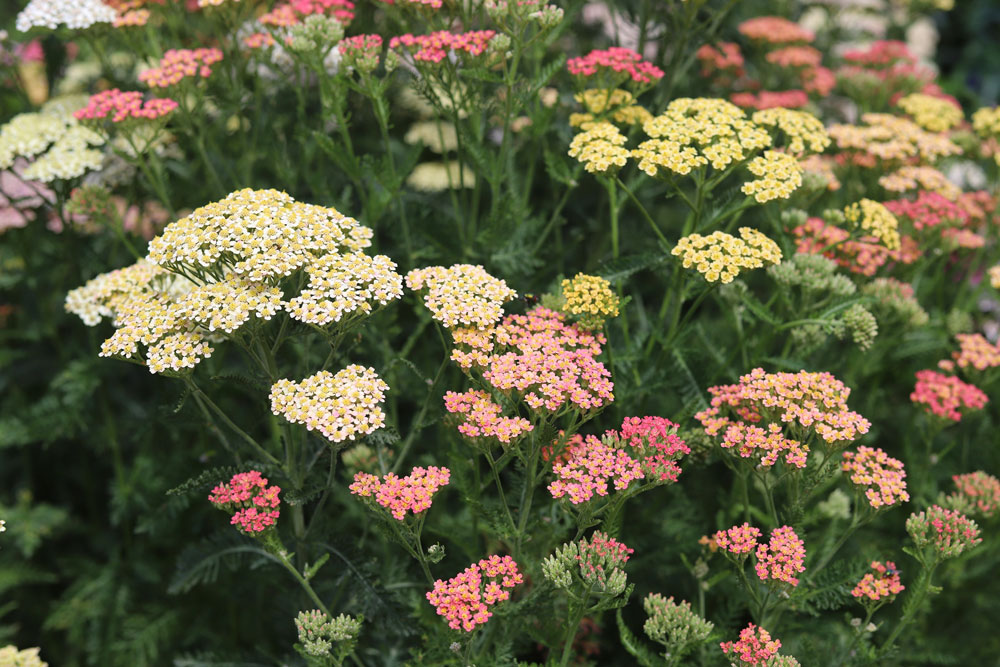
Yarrow is a fantastic choice if you’re looking for a long-blooming perennial. These plants bloom brilliantly from June through September, offering months of vibrant colors.
Yarrow thrives in full sun with well-draining soil. They’re perfect for planting zones 3 through 9, making them quite versatile across different climates.
Planting yarrow in your garden is relatively easy. These plants are drought-resistant, so you don’t need to water them constantly. Their mini blooms create a beautiful, umbrella-like canopy that adds charm and elegance to any garden setting.
If you love low-maintenance plants, yarrow is a great option. You can enjoy their pretty white, pink, or yellow flowers without a lot of hassle.
Lavender
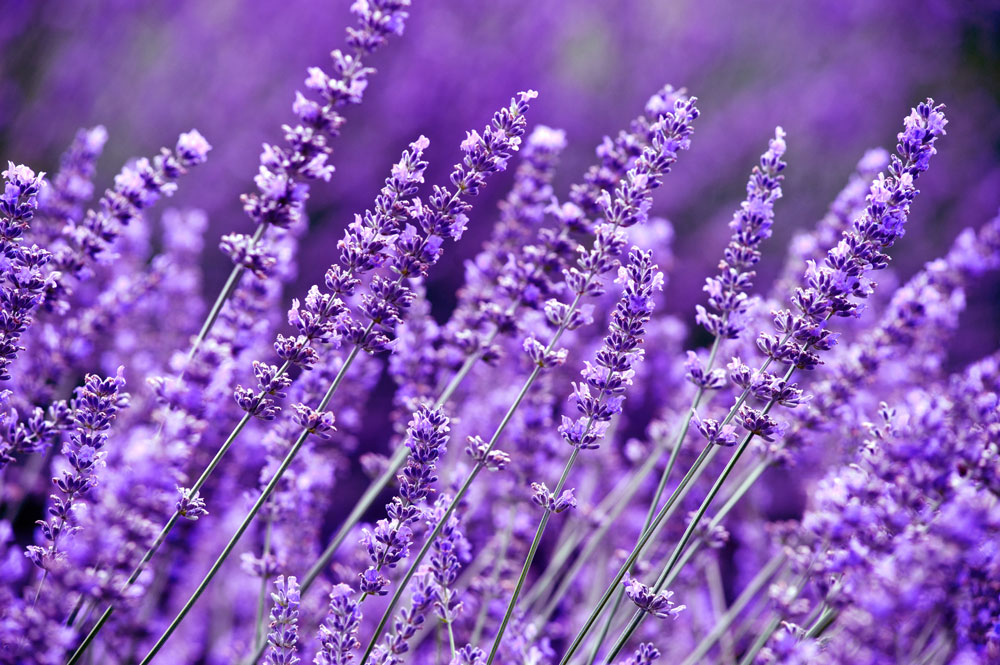
Lavender is a popular choice for gardens because of its lovely fragrance and long blooming period. It brightens up any space with its vibrant colors.
Types of Lavender:
- English Lavender: Known for its strong aroma and elegant purple flowers.
- Spanish Lavender: Features unique bloom shapes and Mediterranean charm.
- French Lavender: Has a variety of flower colors and blends of scents.
Growth Tips:
Lavender grows best in well-drained soil and a sunny spot. It’s a hardy plant that can withstand some drought. Water it sparingly to avoid root rot.
With the right care, lavender blooms can last for a significant part of the season, offering you continual enjoyment. Whether you’re a seasoned gardener or just starting, lavender is a superb choice for adding color and fragrance to your outdoor space.
Geranium
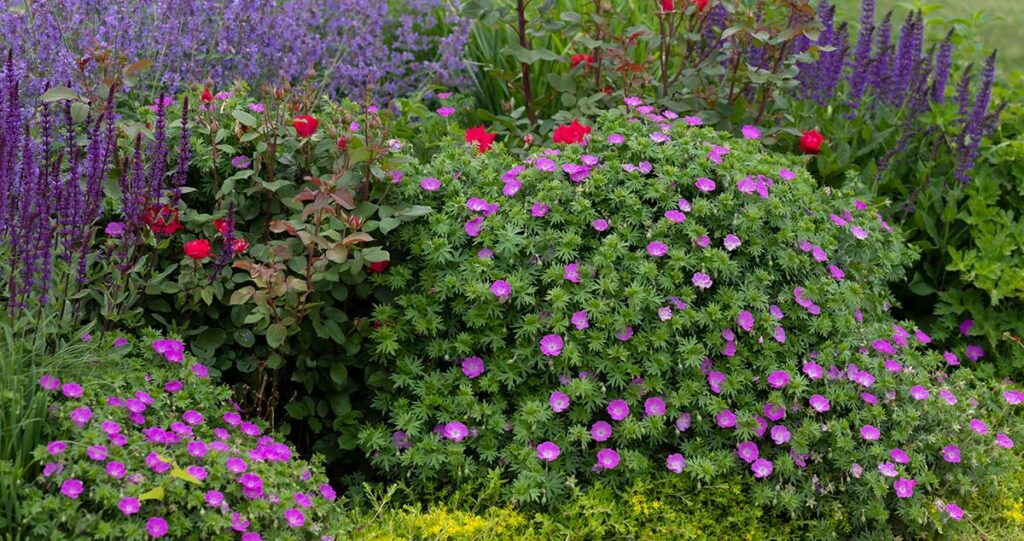
Bursting with vibrant colors, hardy geraniums are a gardener’s delight. They flower for a long time, making your garden lively and cheerful for months.
These plants thrive in various settings, from sunny spots to shadier woodland areas. Hardy geraniums need moderate soil and minimal care, making them perfect for busy gardeners like you.
Most geraniums are low-growing, reaching heights of 12 to 18 inches. Their spread can be 2 to 3 feet wide. This makes them a lovely ground cover, giving your garden a neat, filled-in look.
Here are a few popular varieties you might enjoy:
- Geranium palmatum: Features showy flowers and lush foliage.
- Blue Cloud: Known for its pale color.
- Brookside: Flowers have striking reddish veins.
Many hardy geraniums are pest and disease resistant. This means they look good even when conditions are not perfect. Give them a spot in well-drained soil, and they’ll reward you with little fuss.
Bleeding Heart
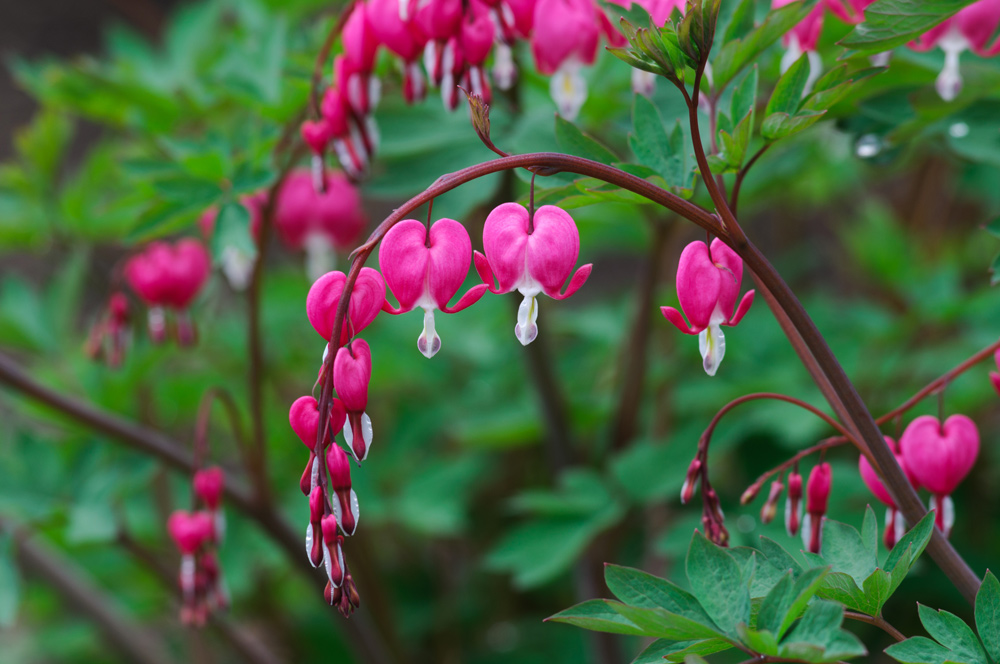
Bleeding Hearts are lovely perennials that bring charm to your garden with their unique heart-shaped flowers. These plants thrive well in partial shade, making them great for woodland gardens.
When planting, make sure to choose well-draining soil. Plant the crown about 1 to 2 inches below the soil surface to prevent rotting. A windbreak can help protect these delicate blooms from strong winds.
There are different types of Bleeding Hearts, like the common one (Dicentra spectabilis) and the Fringed Bleeding Heart (Dicentra eximia). The fringed type is known for its longer blooming period, lasting from late spring through late summer.
Ice Plant (Delosperma)
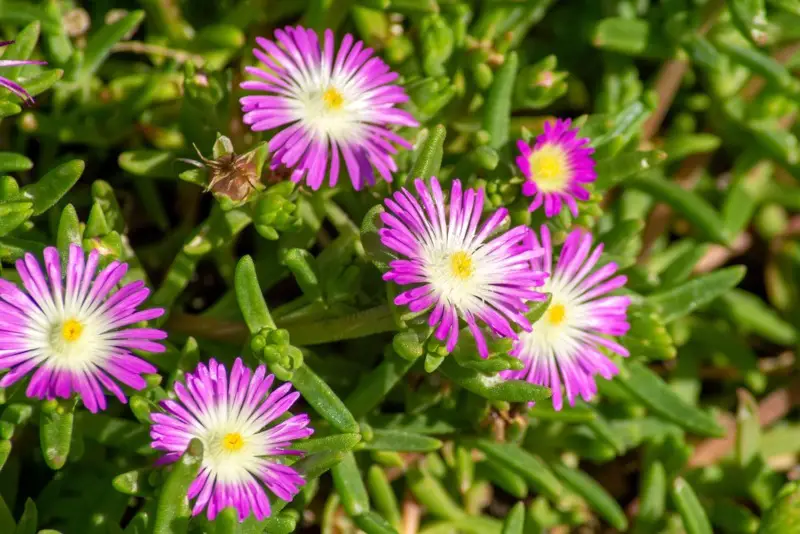
The Ice Plant, known scientifically as Delosperma, is a popular choice for gardeners who love colorful and hardy plants. These ground cover succulents are known for their vibrant daisy-like flowers that can bring a pop of color to any garden.
Native to eastern and southern Africa, Ice Plants thrive in warm and sunny locations. They are drought-tolerant and need well-draining soil to prevent root rot. Once established, these perennials need little maintenance, making them perfect for busy gardeners.
Sneezeweed
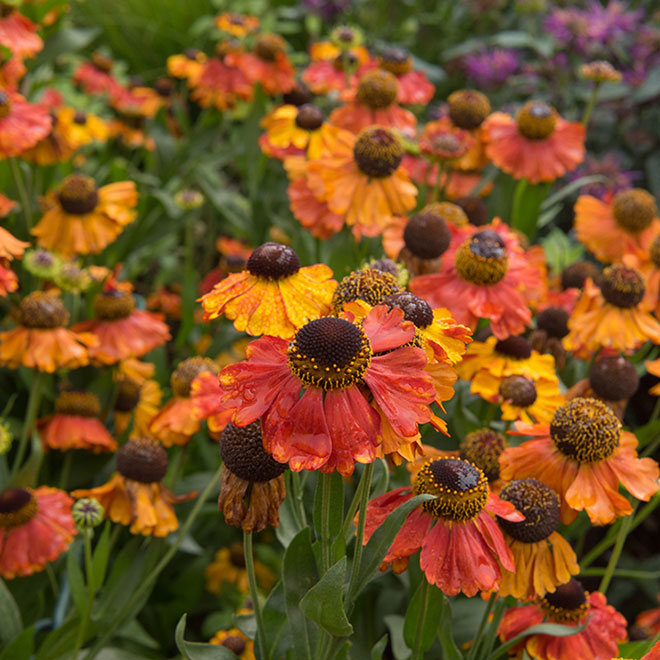
Sneezeweed, known as Helenium autumnale, is a cheerful addition to any garden. This lovely plant is part of the daisy family and is native to North America. Its bright yellow flowers bring color to your garden from late summer through fall.
These plants can reach a height of 3 to 5 feet when grown in full sun with moist soil. The yellow, daisy-like blooms attract bees and butterflies, making sneezeweed a favorite for pollinator gardens.
Don’t let the name fool you—sneezeweed is not a weed. It thrives in moist to wet areas, like edges, shores, and open fields. It’s a perennial, so it comes back year after year with little fuss.
Blue Vervain
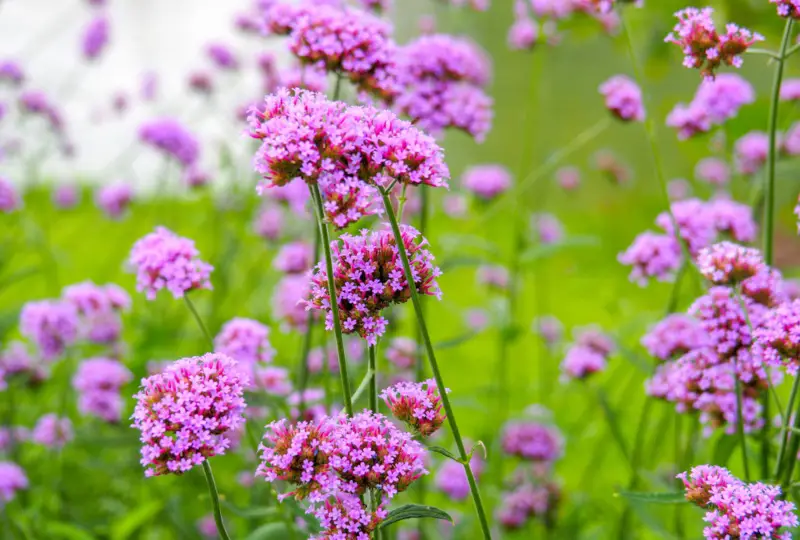
Blue vervain is a lovely perennial that can bring charm to your garden. With its tall spikes of purplish-blue flowers, it stands out beautifully. These blooms can attract many pollinators, making it a friendly choice for a wildlife garden.
This plant grows to heights of 2-5 feet, depending on the conditions. Its square stems can be green or red and are noticeable with their unique shape. The lance-shaped leaves have a toothed edge, adding texture to the plant.
Blue vervain thrives best in moist conditions. If you have a spot with poor drainage, this plant can be perfect for you. It enjoys full sun to partial shade, making it versatile for different garden areas.
Its blooming period is a delight, extending from July to September. During this time, only a few flowers bloom at once on each spike, creating a subtle yet constant display of color.
Joe-Pye Weed
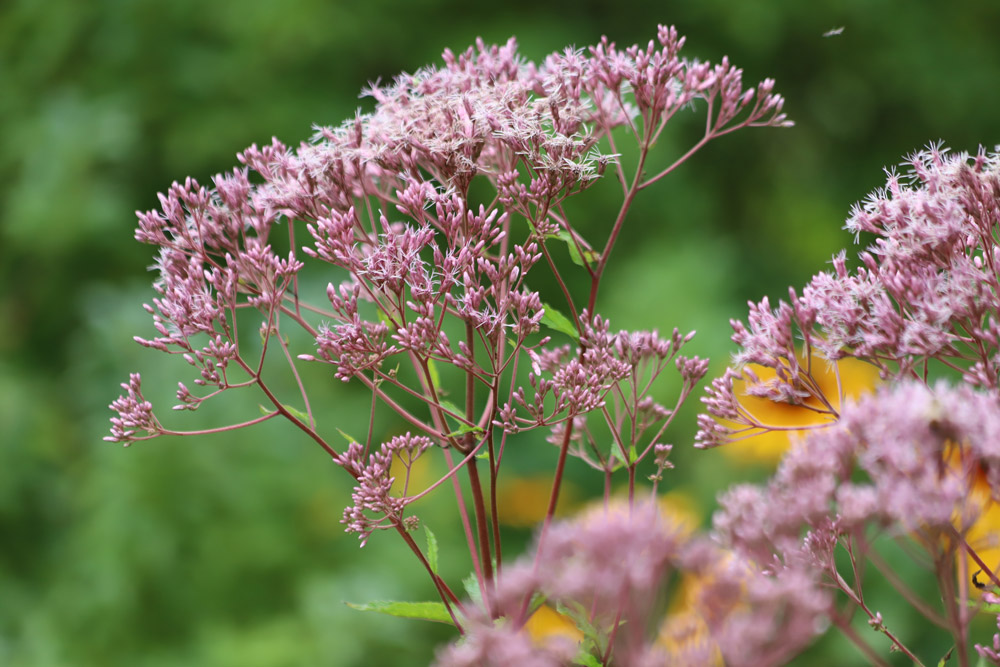
Joe-Pye Weed is a tall perennial that adds a splash of color to your garden. It can grow up to 8 feet tall, giving your garden a striking vertical element. This plant is perfect for the back of borders.
Its clusters of tiny pink or purple flowers bloom from mid-summer to fall. The blooms attract butterflies, making your garden lively and beautiful.
Plant Joe-Pye Weed in full sun or partial shade. It loves moist soil, so it’s ideal for rain gardens or near ponds. This plant is also fairly easy to care for.
Aster
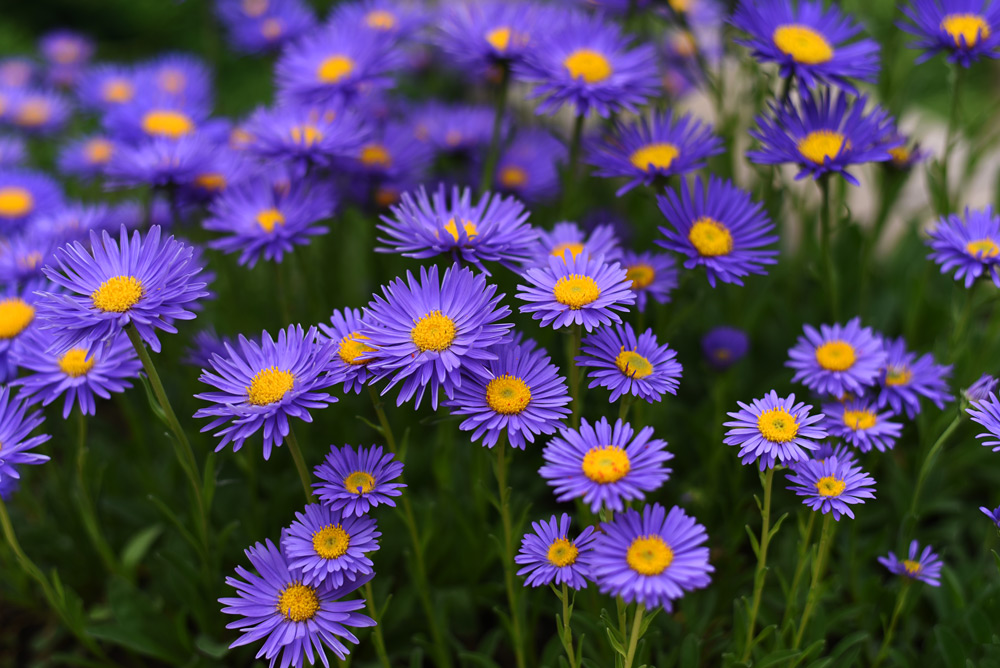
Asters are delightful perennials known for their vibrant daisy-like flowers. They bloom from late summer to fall, adding a splash of color to your garden when many other plants have faded.
Colors and Variety:
Asters come in various colors like purple, pink, blue, and white. With dozens of species, you can choose the perfect type for your garden.
Pollinator Friendly:
These flowers are not just pretty; they’re important for pollinators like bees and butterflies, especially towards the end of the season.
Zones and Growth:
Asters are versatile and suitable for USDA Hardiness Zones 3 to 8. Depending on the variety, they can grow from 1 to 6 feet tall.
Goldenrod
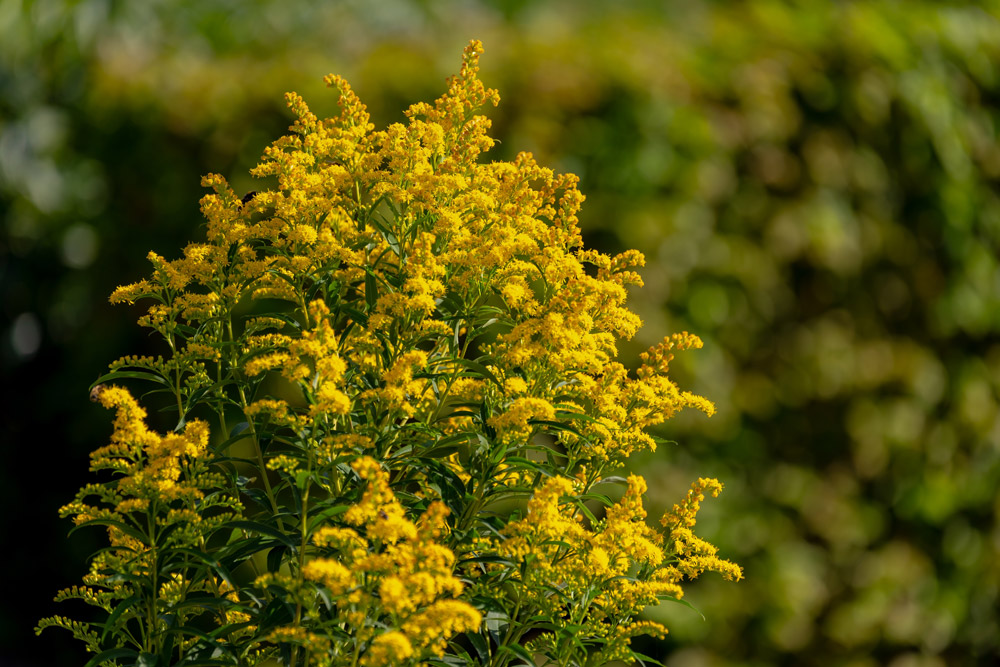
Goldenrod is a lovely addition to your garden. With its bright yellow flowers, it blooms in late summer through fall. You can find it in many shapes and sizes, making it perfect for beds, borders, or even containers on your patio. Its feathery plumes bring a joyful splash of color.
These plants are also wonderful for bees and butterflies. They provide a habitat and food source for these pollinators, helping your entire garden thrive. Most goldenrods do well in sunny spots, and they’re quite forgiving, growing in average to poor soil.
Pincushion Flower
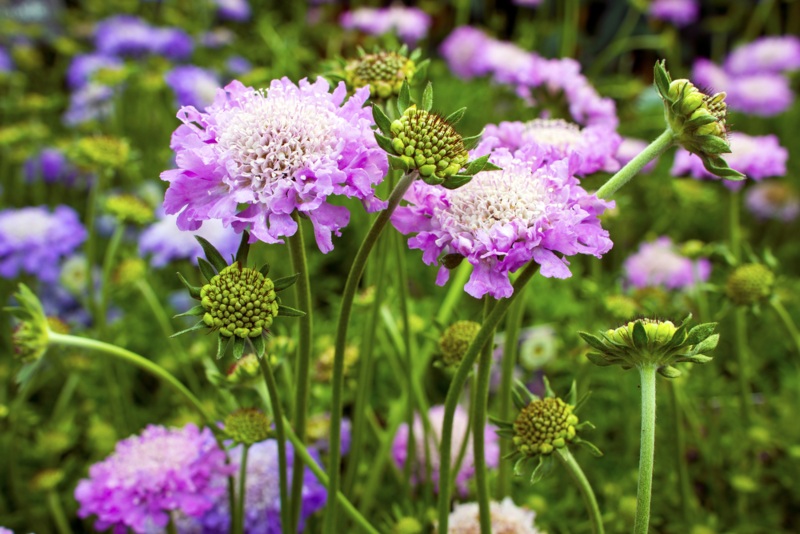
The pincushion flower, also known as Scabiosa, is a charming addition to your garden. You’ll often find it in lovely shades of blue, pink, or white. Its button-like blooms range from 1 to 3½ inches, adding delightful color.
These flowers are perennials, meaning they come back year after year. They tend to bloom from late spring to the first frost. Under ideal conditions, their bloom can stretch even longer.
Pincushion flowers are known for attracting bees and butterflies. Their flat shape makes it easy for these creatures to land, bringing life to your garden. They also have interesting wiry foliage that adds texture.
Easy to grow, pincushion flowers thrive in USDA zones 4-9. They’re versatile and fit nicely into many garden settings. They look great in larger groups or as companion plants with other perennials.
| Common Name | Scientific Name | Estimated Blooming Period | Notes |
|---|---|---|---|
| Catmint | Nepeta | Spring to early fall (6-7 months) | Known for continuous blooms, thrives in full sun, attracts pollinators. |
| Coreopsis | Coreopsis | Early summer to fall (4 months) | Daisy-like flowers, drought-tolerant, benefits from deadheading. |
| Yarrow | Achillea | June to September (4 months) | Hardy, blooms in clusters, good for dry soils, attracts butterflies. |
| Black-eyed Susan | Rudbeckia | June to September (4 months) | Bright yellow petals, deer-resistant, blooms profusely in sunny spots. |
| Phlox | Phlox | Summer to fall (4 months) | Fragrant, mildew-resistant varieties available, needs good air circulation. |
| Russian Sage | Perovskia | July to October (4 months) | Lavender-blue flowers, drought-tolerant, excellent for borders. |
| Sedum | Sedum | Late summer to fall (3 months) | Succulent foliage, attracts bees, thrives in poor soils. |
| Shasta Daisy | Leucanthemum | July to September (3 months) | Classic white petals, deadheading extends bloom, prefers full sun. |
| Lavender | Lavandula | June to August (3 months) | Fragrant, drought-tolerant, blooms in spikes, deer-resistant. |
| Perennial Geranium | Geranium | Late spring to late summer (3-4 months) | Low-growing, colorful blooms, attracts pollinators, shade-tolerant. |
| Salvia | Salvia | Several months (3-4 months) | Spiky flowers, drought-tolerant, attracts hummingbirds, varies by species. |
| Astilbe | Astilbe | Early summer to fall (4-5 months) | Feathery plumes, shade-loving, moist soil preferred, attracts butterflies. |
| Bleeding Heart | Dicentra | Late spring to fall (4-5 months) | Heart-shaped flowers, thrives in partial shade, deer-resistant. |
| Ice Plant | Delosperma | June to September (4 months) | Ground cover, drought-tolerant, colorful blooms, thrives in sunny areas. |
| Sneezeweed | Helenium | Early summer to early fall (4 months) | Daisy-like, deadheading prolongs bloom, attracts pollinators. |
| Blue Vervain | Verbena | Midsummer to early autumn (3-4 months) | Tall spikes, native, attracts butterflies, prefers moist soils. |
| Joe-Pye Weed | Eutrochium | Summer to fall (3-4 months) | Tall, purple blooms, attracts butterflies, thrives in wet areas. |
| Aster | Symphyotrichum | Summer to fall (3-4 months) | Late-season color, daisy-like, attracts pollinators, deer-resistant. |
| Goldenrod | Solidago | Summer to fall (3-4 months) | Bright yellow, native, attracts bees, can be invasive in some areas. |
| Pincushion Flower | Scabiosa | Late spring to first frost (4-5 months) | Pin-like stamens, attracts butterflies, thrives in full sun, good cut flower. |

